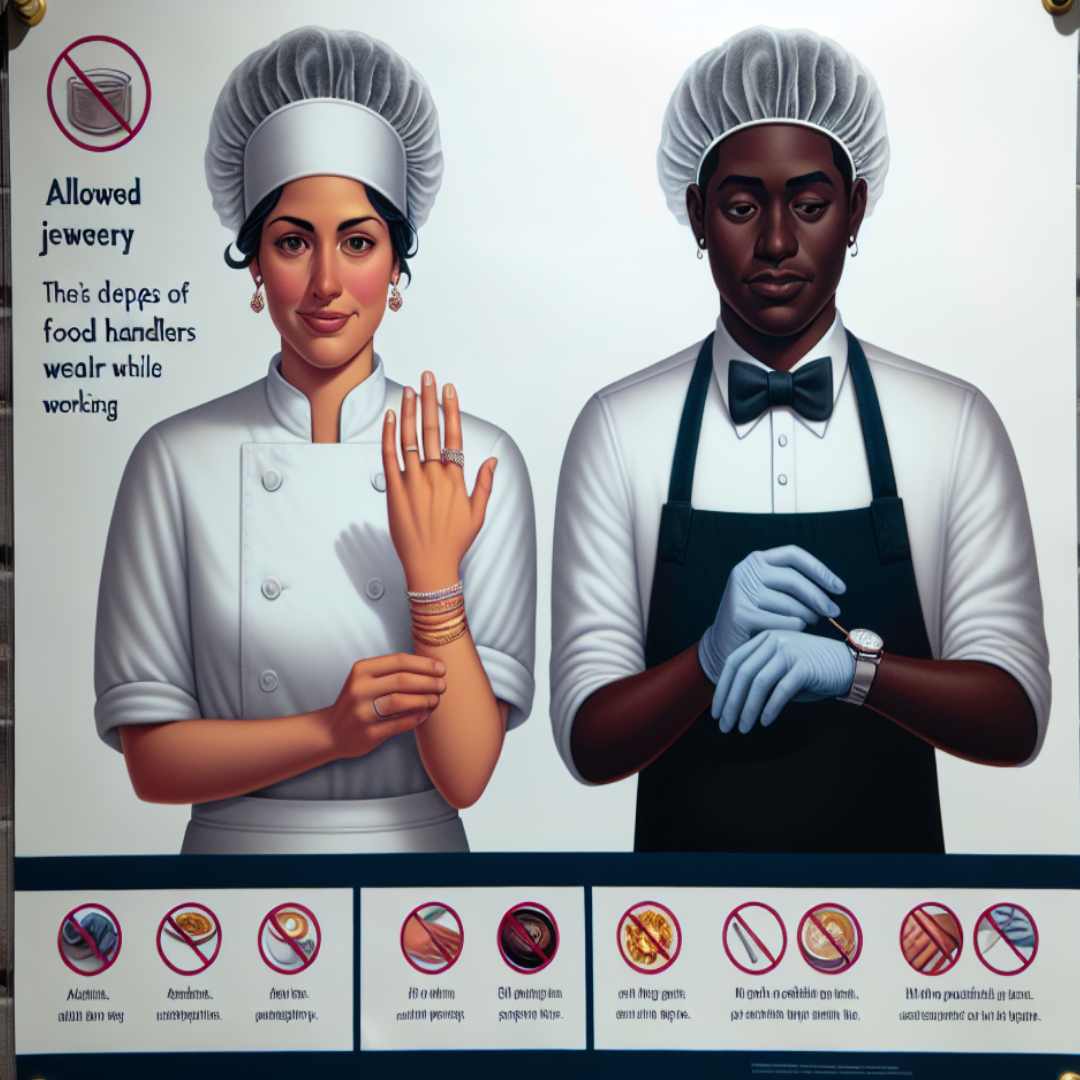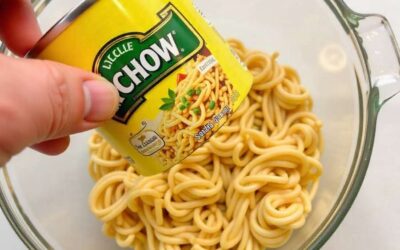In the bustling world of food service, where every detail counts, the question of jewelry in the workplace often arises. Balancing personal style with health and safety regulations becomes essential for those who love to accessorize. This blog post aims to guide food handlers and jewelry enthusiasts about what jewelry can be worn without compromising safety or hygiene standards.
Understanding the Importance of Hygiene at Work
Hygiene in the food industry is not just a suggestion; it’s a necessity. Foodborne illnesses can spread quickly, and maintaining cleanliness is crucial. For food handlers, understanding the potential risks associated with jewelry is the first step toward safe practices. Jewelry can harbor bacteria or become a physical contaminant in food if not appropriately managed.
Cleanliness regulations often dictate what workers can wear. These rules ensure no foreign objects or harmful bacteria enter the food supply chain. Jewelry can be an unexpected culprit in this regard. When preparing food, every minor item on your body should be assessed for its potential to cause contamination.
Jewelry lovers in food handling roles must prioritize hygiene without sacrificing style. By understanding the guidelines and making informed choices, they can successfully balance both aspects.
The Risks Associated with Wearing Jewelry
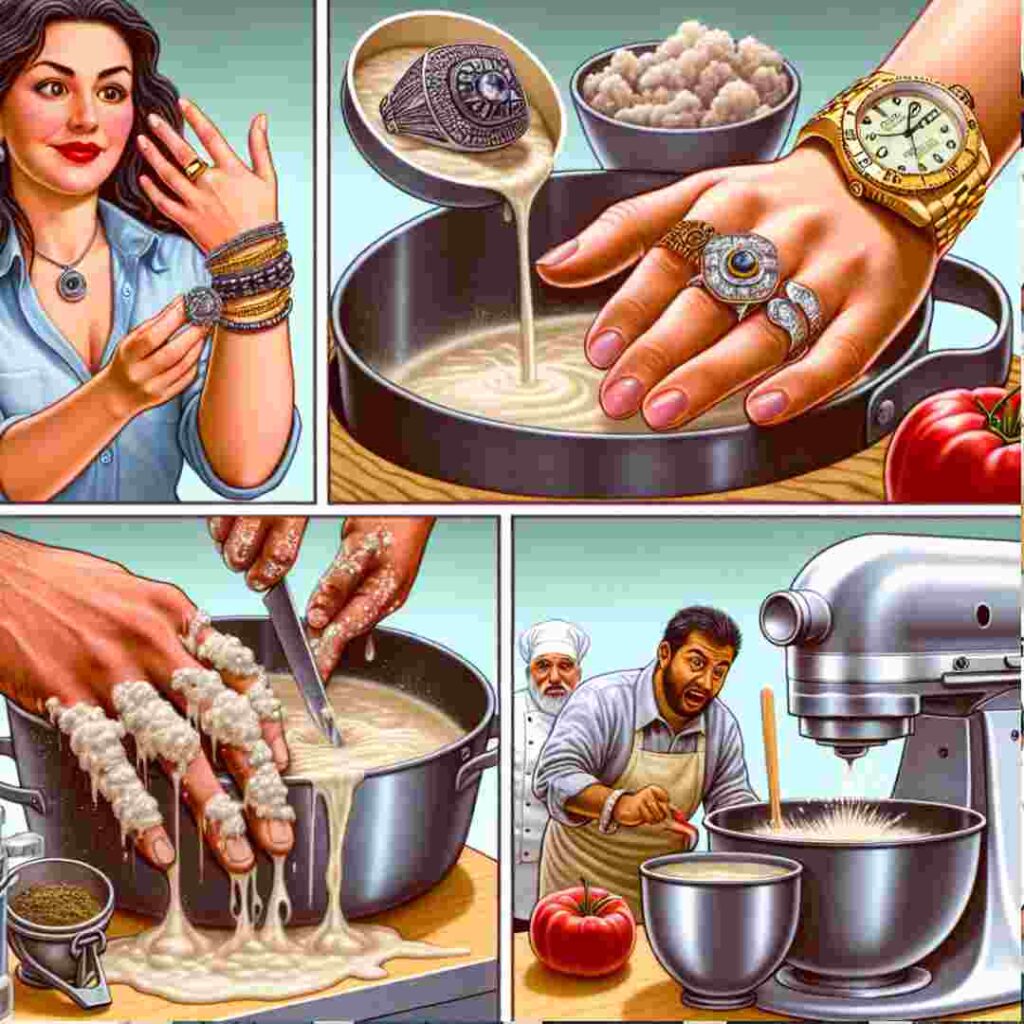
Jewelry may seem harmless, but it can pose significant risks in a food-handling environment. Rings, bracelets, and watches can collect dirt and germs, which may transfer to food. These items can also trap cleaning chemicals, creating additional hazards.
Loose-fitting jewelry or items with small parts can fall into food, creating physical hazards. Even secure pieces can get caught on equipment, posing safety risks to the wearer and potentially damaging machinery. The consequences can range from minor incidents to severe contamination cases.
Understanding these risks helps workers make informed decisions about their accessories. Evaluating each piece of jewelry for its potential to cause harm is essential, ensuring that safety remains a priority while on the job.
Establishing Guidelines for Jewelry in Food Service
Health authorities set specific guidelines for what jewelry food handlers can wear. These regulations vary by region but generally restrict or prohibit jewelry to prevent contamination. In most cases, simple, unadorned bands are the safest option.
Food handlers should familiarize themselves with local regulations and company policies regarding jewelry. Understanding these guidelines ensures compliance and promotes a safer working environment. Keeping safety at the forefront helps maintain the integrity of the food supply chain.
For those who love wearing jewelry, adhering to guidelines doesn’t mean losing personal style. Exploring creative solutions and choosing appropriate pieces ensures safety and self-expression in the workplace.
Choosing the Right Jewelry for Food Workers
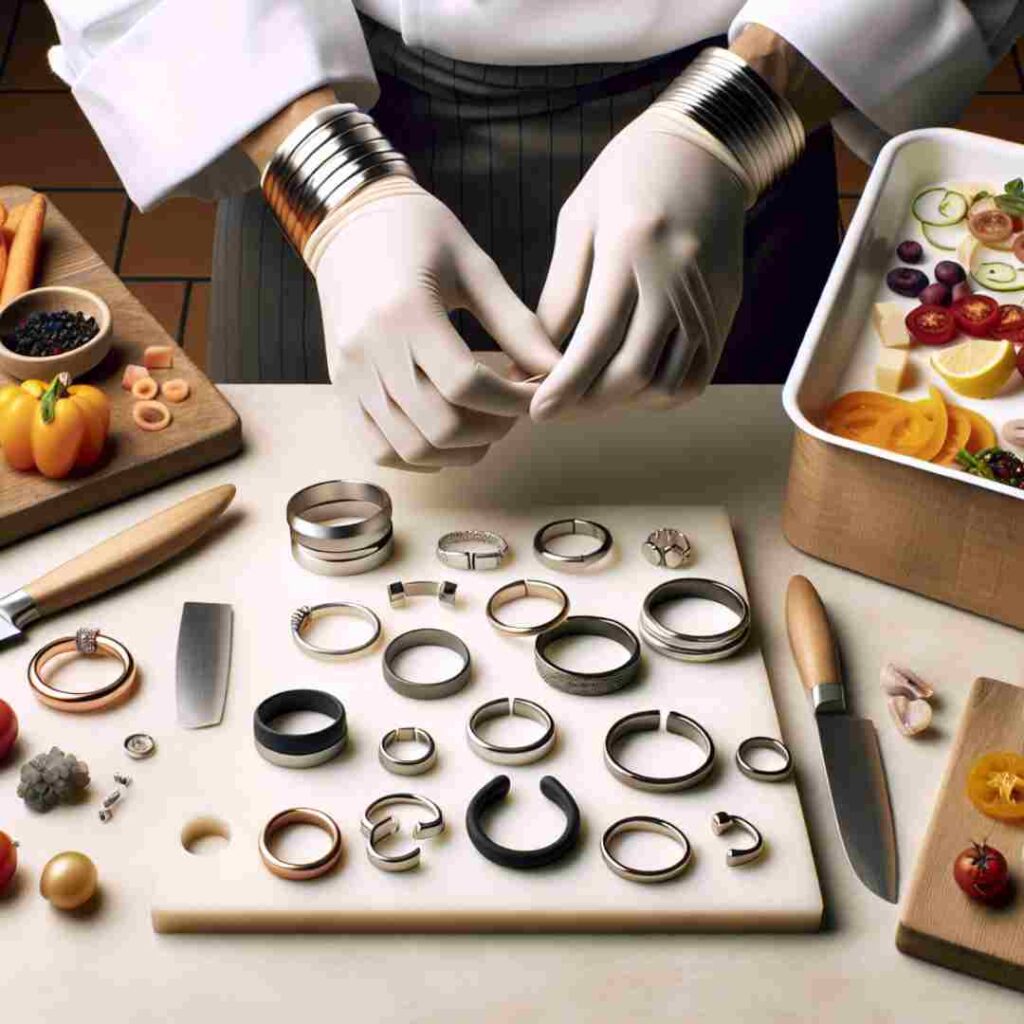
Selecting appropriate jewelry for food handlers involves considering both safety and style. Simple bands made of materials like silicone or stainless steel are often acceptable. These materials are easy to clean and less likely to harbor bacteria.
Avoiding jewelry with stones or intricate settings is wise, as these can trap food particles and are more challenging to sanitize. Minimalist designs align with safety guidelines and offer a sleek, modern aesthetic. For those who prefer some flair, consider hypoallergenic materials that minimize irritation and are easy to maintain.
By focusing on practicality and hygiene, jewelry lovers can still enjoy accessorizing while adhering to food safety standards. The key is finding balance, ensuring both personal expression and professional responsibility.
Silicone Rings A Safe Choice for Food Handlers
Silicone rings have become a popular choice among food handlers. They offer a safe, hypoallergenic alternative to traditional metal bands. These rings are durable, flexible, and resistant to damage from chemicals and heat.
Silicone rings are particularly suited to the food industry because they are easy to clean. They can withstand regular sanitization without losing shape or color, crucial for maintaining hygiene standards in a fast-paced environment.
Silicone offers comfort and safety for those who love wearing rings but need a practical solution. This trend allows jewelry enthusiasts to maintain their style while prioritizing cleanliness and security.
Bracelets and Watches: What’s Allowed?
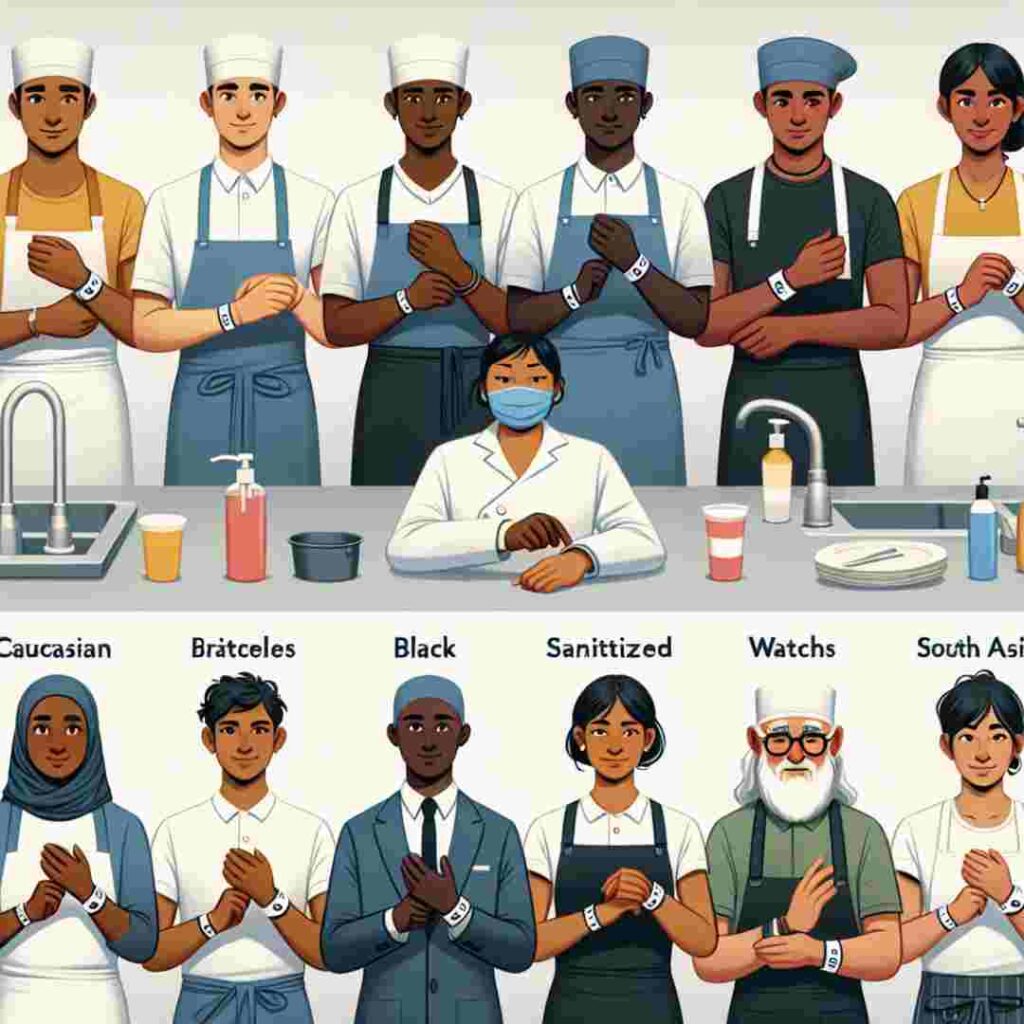
Food handlers must tread carefully when it comes to bracelets and watches. Most regulations advise against wearing these items due to the risk of contamination and obstruction. However, exceptions exist for medical alert bracelets, which are essential for safety.
If allowed by company policy, slim, smooth bracelets without charms or extensive links may be acceptable. Similarly, waterproof, easily sanitized watches can be considered if necessary for timekeeping. Each piece should be assessed for its cleanliness and practicality in the workplace.
Ultimately, wearing a bracelet or watch should prioritize hygiene and safety. Ensuring these accessories do not interfere with food preparation is crucial for maintaining a secure working environment.
Earrings and Necklaces Striking a Balance
Earrings and necklaces present unique challenges in a food service setting. Dangling or elaborate designs are typically discouraged due to the risk of falling into food or getting caught on equipment. However, small, secure studs or short chains may be permissible.
When choosing earrings or necklaces, consider the material and design. Opt for hypoallergenic metals and simple styles that stay close to the body. Avoid items with stones or intricate patterns that can trap bacteria. Safety backings on earrings add a layer of security.
By carefully selecting discreet pieces, jewelry lovers can maintain their style without compromising safety. Finding the right balance is critical to harmonizing personal expression with professional responsibilities.
Caring for Jewelry in the Workplace

Proper jewelry care and maintenance are essential for food handlers. Regular cleaning prevents bacteria buildup and maintains the pieces’ integrity. Using gentle, non-toxic cleaning agents ensures both safety and longevity.
Establishing a cleaning routine helps keep jewelry in top condition. For items allowed at work, daily sanitization is recommended. More thorough cleanings with ultrasonic devices or specialized solutions can be conducted at home.
Taking care of jewelry preserves its beauty and promotes a hygienic work environment. Food handlers who invest time in maintenance are committed to personal style and workplace safety.
Creative Alternatives for Jewelry Enthusiasts
For those who love accessorizing but face restrictions at work, exploring alternatives can satisfy style and safety needs. Use hair accessories, colorful shoelaces, or decorative pins to express individuality without compromising hygiene standards.
Temporary tattoos or nail art can also add a touch of personality, offering a creative outlet within the confines of safety regulations. These options provide a fresh perspective on personal expression in a professional setting.
Jewelry enthusiasts can find new ways to showcase their style while adhering to guidelines. Exploring creative alternatives allows for self-expression safely and responsibly.
Building a Hygiene-Conscious Jewelry Wardrobe
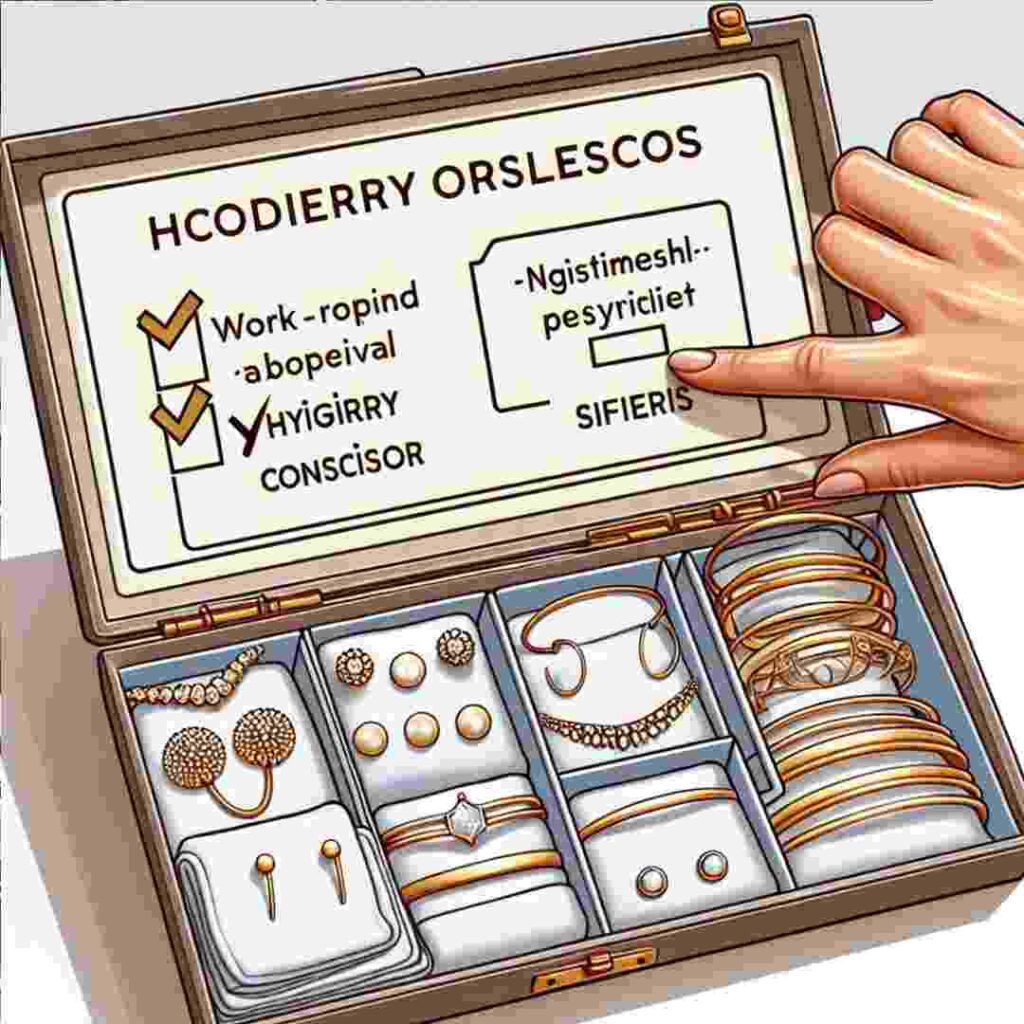
Developing a work-appropriate jewelry collection involves thoughtful selection and care. Focus on pieces that meet hygiene standards and align with personal tastes. This approach ensures both safety and satisfaction in the workplace.
Consider investing in versatile pieces that can transition between work and leisure. Simple bands, small studs, and minimalist designs offer flexibility and elegance for any occasion. Over time, this curated collection becomes a valuable asset for expressing individuality while maintaining professionalism.
Building a hygiene-conscious jewelry wardrobe empowers food handlers to balance safety with style. Thoughtful choices and regular care create a harmonious blend of personal expression and workplace responsibility.
Understanding the Role of Policy in Jewelry Guidelines
Company policies play a significant role in determining what jewelry is permissible at work. Understanding these guidelines and their basis in safety regulations helps food handlers make informed decisions. Compliance ensures a secure environment for both employees and consumers.
Communication with employers about jewelry preferences can lead to better understanding and potentially more flexible policies. Employees should feel empowered to discuss their concerns and seek solutions accommodating safety and personal expression.
Navigating the intersection of policy and personal style requires awareness and engagement. By staying informed and proactive, jewelry enthusiasts can successfully integrate their passion into their professional lives.
Conclusion Finding Your Sparkle in Food Service
Balancing jewelry and hygiene in the food service industry requires creativity and awareness. Food handlers can safely express their style by understanding the risks and adhering to guidelines. The key lies in choosing appropriate pieces, maintaining cleanliness, and exploring alternatives.
Whether opting for silicone rings or discovering creative accessories, jewelry lovers can shine in the workplace. Building a collection that prioritizes safety ensures a harmonious blend of personal expression and professional responsibility.
Finding your sparkle is about balance for jewelry enthusiasts in the food industry. With thoughtful choices and a commitment to hygiene, you can enjoy style and safety in your role.










